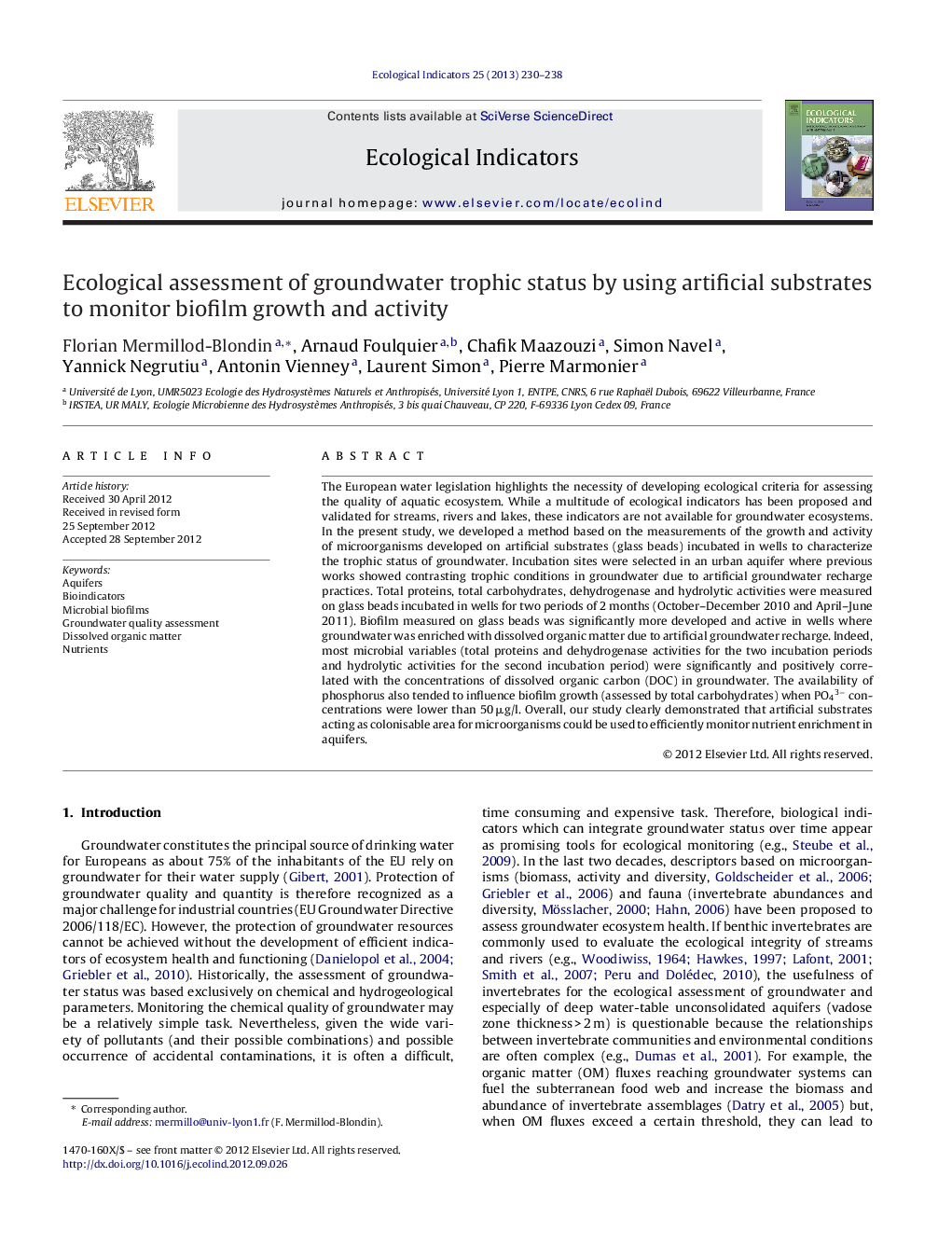| Article ID | Journal | Published Year | Pages | File Type |
|---|---|---|---|---|
| 4373605 | Ecological Indicators | 2013 | 9 Pages |
The European water legislation highlights the necessity of developing ecological criteria for assessing the quality of aquatic ecosystem. While a multitude of ecological indicators has been proposed and validated for streams, rivers and lakes, these indicators are not available for groundwater ecosystems. In the present study, we developed a method based on the measurements of the growth and activity of microorganisms developed on artificial substrates (glass beads) incubated in wells to characterize the trophic status of groundwater. Incubation sites were selected in an urban aquifer where previous works showed contrasting trophic conditions in groundwater due to artificial groundwater recharge practices. Total proteins, total carbohydrates, dehydrogenase and hydrolytic activities were measured on glass beads incubated in wells for two periods of 2 months (October–December 2010 and April–June 2011). Biofilm measured on glass beads was significantly more developed and active in wells where groundwater was enriched with dissolved organic matter due to artificial groundwater recharge. Indeed, most microbial variables (total proteins and dehydrogenase activities for the two incubation periods and hydrolytic activities for the second incubation period) were significantly and positively correlated with the concentrations of dissolved organic carbon (DOC) in groundwater. The availability of phosphorus also tended to influence biofilm growth (assessed by total carbohydrates) when PO43− concentrations were lower than 50 μg/l. Overall, our study clearly demonstrated that artificial substrates acting as colonisable area for microorganisms could be used to efficiently monitor nutrient enrichment in aquifers.
